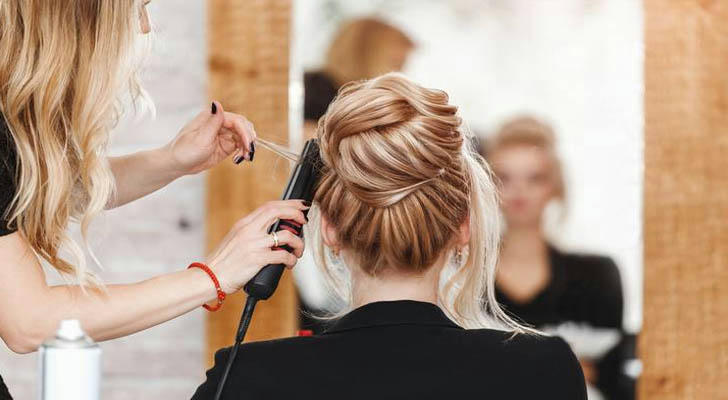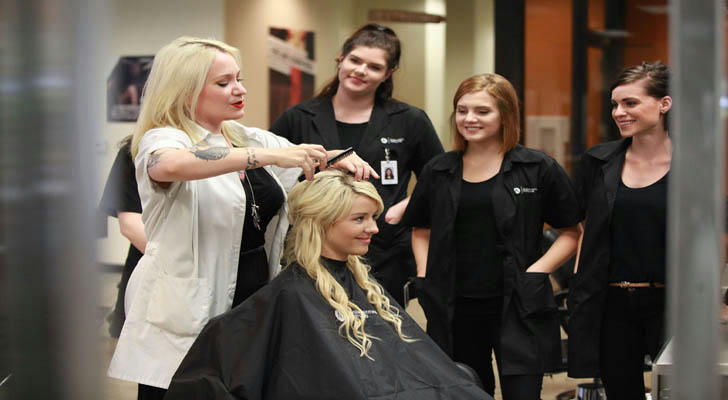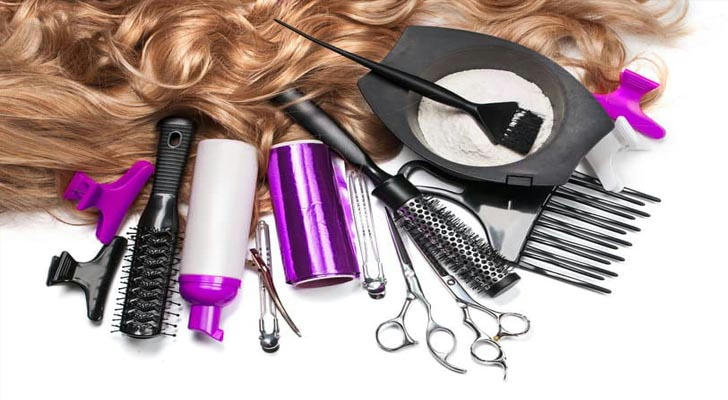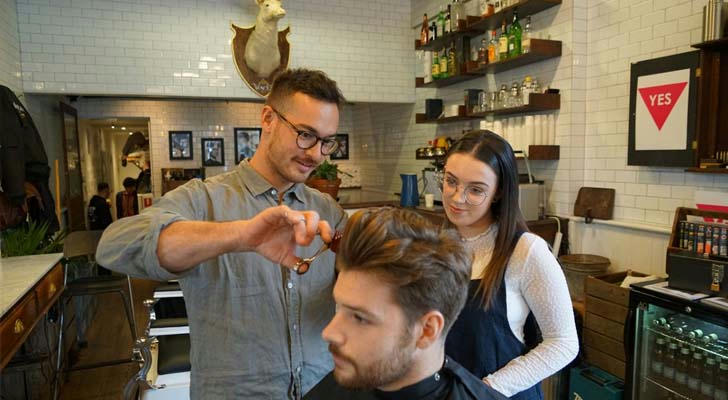The Art and Science of Hair: A Journey into the World of Hairdressing Classes
Hair is more than just strands of keratin growing out of your scalp—it’s a canvas for creativity, a reflection of personality, and sometimes, a science experiment waiting to happen. Whether you’re a fan of sleek bobs, wild curls, or bold colors, the world of hairdressing is as diverse as the people who wear these styles. But have you ever wondered how hairstylists work their magic? Enter the fascinating world of hairdressing classes, where art meets science, and every snip, curl, and color tells a story. Let’s dive into this vibrant world, filled with real-world examples, fun facts, actionable tips, and a touch of humor.

Hair: The Ultimate Playground for Creativity
Hairdressing classes are like art school, but instead of paintbrushes and canvases, you’re armed with scissors, combs, and a whole lot of hairspray. Imagine walking into a classroom where mannequin heads with luscious locks are lined up like eager students, waiting to be transformed. From classic cuts like the pixie or bob to avant-garde styles that belong on a runway, hairdressing classes teach you how to turn hair into a masterpiece.
Take Vidal Sassoon, for example, the legendary hairstylist who revolutionized the industry in the 1960s with his geometric cuts. His iconic five-point cut became a symbol of modernism and freedom, proving that hair isn’t just about looking good—it’s about making a statement. In hairdressing classes, you’ll learn the techniques behind such iconic styles, as well as how to adapt them to suit individual faces and personalities. It’s not just about cutting hair; it’s about crafting a look that tells a story.
Actionable Tip: If you’re practicing at home, start with a mannequin head or a willing friend. Use sectioning clips to divide the hair into manageable parts, and always cut less than you think you need to—you can always trim more later!
The Science of Hair: More Than Just Chemistry
While hairdressing is undoubtedly an art, it’s also deeply rooted in science. Ever wonder why your hair curls when it’s humid or why bleach turns hair blonde? Hairdressing classes often delve into the biology and chemistry of hair, teaching students about the structure of hair strands, the role of pH in shampoos, and the science behind hair dyes.
For instance, did you know that hair is made up of three layers: the cuticle, cortex, and medulla? The cortex, which contains melanin, determines your hair color. When you bleach your hair, you’re essentially stripping away the melanin, leaving behind a lighter shade. Hairdressing classes also teach students about the importance of pH balance in hair products. Alkaline products can open the hair cuticle, making it easier to dye or straighten hair, while acidic products help seal the cuticle, locking in moisture and shine.
Actionable Tip: If you’re experimenting with hair dye at home, always do a strand test first. This will help you gauge how the color will turn out and how long you need to leave the dye in. And don’t forget to use a deep conditioning treatment afterward to restore moisture!

A Global Hair Scene: Trends from Around the World
Hair trends vary wildly across cultures, and hairdressing classes often explore these global influences. In Japan, for example, datsuara-kei (escaping the salaryman look) has inspired bold, asymmetrical cuts and vibrant colors. Meanwhile, in South Korea, the ulzzang (best face) trend emphasizes soft, natural waves and honey-toned highlights, creating a look that’s both youthful and effortless.
In the United States, hair trends are as diverse as the country itself. From the sleek, straight styles popularized by celebrities like Kim Kardashian to the voluminous curls championed by stars like Beyoncé, there’s no shortage of inspiration. Hairdressing classes often teach students how to recreate these iconic looks, as well as how to adapt them to suit different hair types and textures.
Actionable Tip: If you’re trying to recreate a celebrity look, start by researching tutorials online. Many professional hairstylists share step-by-step guides on platforms like YouTube and Instagram. And remember, not every style will work for every hair type—so be prepared to adapt!
Tools of the Trade: From Scissors to Spray Bottles
One of the most exciting parts of hairdressing classes is getting to play with all the tools and gadgets. From precision scissors and razors to curling irons and diffusers, the equipment used in hairdressing is both practical and fun. Ever wondered how stylists achieve that perfect balayage? It’s all about the right brush and a steady hand.
For example, Oribe, a luxury haircare brand, offers a range of professional tools and products that are often used in hairdressing classes. Their Grandiose Hair Plumping Mousse is a favorite among students, providing volume and hold without weighing hair down. In classes, students learn how to use these tools effectively, from sectioning hair to applying products evenly. It’s not just about the tools—it’s about the techniques.
Actionable Tip: Invest in a good pair of hairdressing scissors if you’re serious about cutting hair. Cheap scissors can damage hair and make it harder to achieve a clean cut. And always keep your tools clean and well-maintained—dirty tools can lead to infections and uneven results.

More Than Just Hair: The Psychology of Style
Hairdressing isn’t just about making people look good—it’s about making them feel good. A great haircut or color can boost confidence, transform a mood, and even change the way others perceive you. Hairdressing classes often include lessons on client consultation, teaching students how to listen to clients’ needs and translate them into a style that suits their personality and lifestyle.
For example, a client who’s going through a major life change might want a dramatic cut to symbolize a fresh start. A busy mom, on the other hand, might prefer a low-maintenance style that’s easy to manage. Hairdressing classes teach students how to read between the lines, ensuring that every client leaves the chair feeling like the best version of themselves.
Actionable Tip: If you’re cutting or styling someone else’s hair, always start with a consultation. Ask them about their lifestyle, how much time they’re willing to spend on their hair daily, and what they love (or hate) about their current style. This will help you create a look that they’ll love and feel confident wearing.
The Future of Hairdressing: Tech Meets Texture
As technology advances, so does the world of hairdressing. Virtual reality (VR) is starting to make its way into the industry, allowing clients to “try on” different styles before committing to a cut or color. Imagine putting on a VR headset and seeing how you’d look with a platinum blonde pixie or fiery red curls—it’s like a fitting room for your hair.
Sustainability is also becoming a key focus in the industry. Many hairdressing classes now emphasize eco-friendly practices, such as using ammonia-free dyes, reducing water waste, and recycling hair clippings. Some salons are even using hair clippings to create eco-friendly mats that absorb oil spills, proving that beauty and sustainability can go hand in hand.
Actionable Tip: If you’re looking to make your hair routine more eco-friendly, consider switching to products with natural ingredients and minimal packaging. You can also reduce water waste by turning off the tap while you shampoo and condition your hair.

Final Snip
Hairdressing classes are more than just a way to learn how to cut and style hair—they’re a celebration of creativity, a lesson in science, and a gateway to self-expression. Whether you’re taking a class to pursue a career in the beauty industry or simply to have fun, one thing is certain: the world of hairdressing is as vibrant and diverse as the people who wear these styles. So grab a pair of scissors, pick up a comb, and let your creativity flow. After all, life is too short for boring hair!
Bonus Tip: If you’re nervous about trying a new style, start small. Experiment with temporary changes, like clip-in extensions or wash-out hair color, before committing to a big chop or permanent dye. This way, you can test the waters without any long-term regrets. Happy styling!
